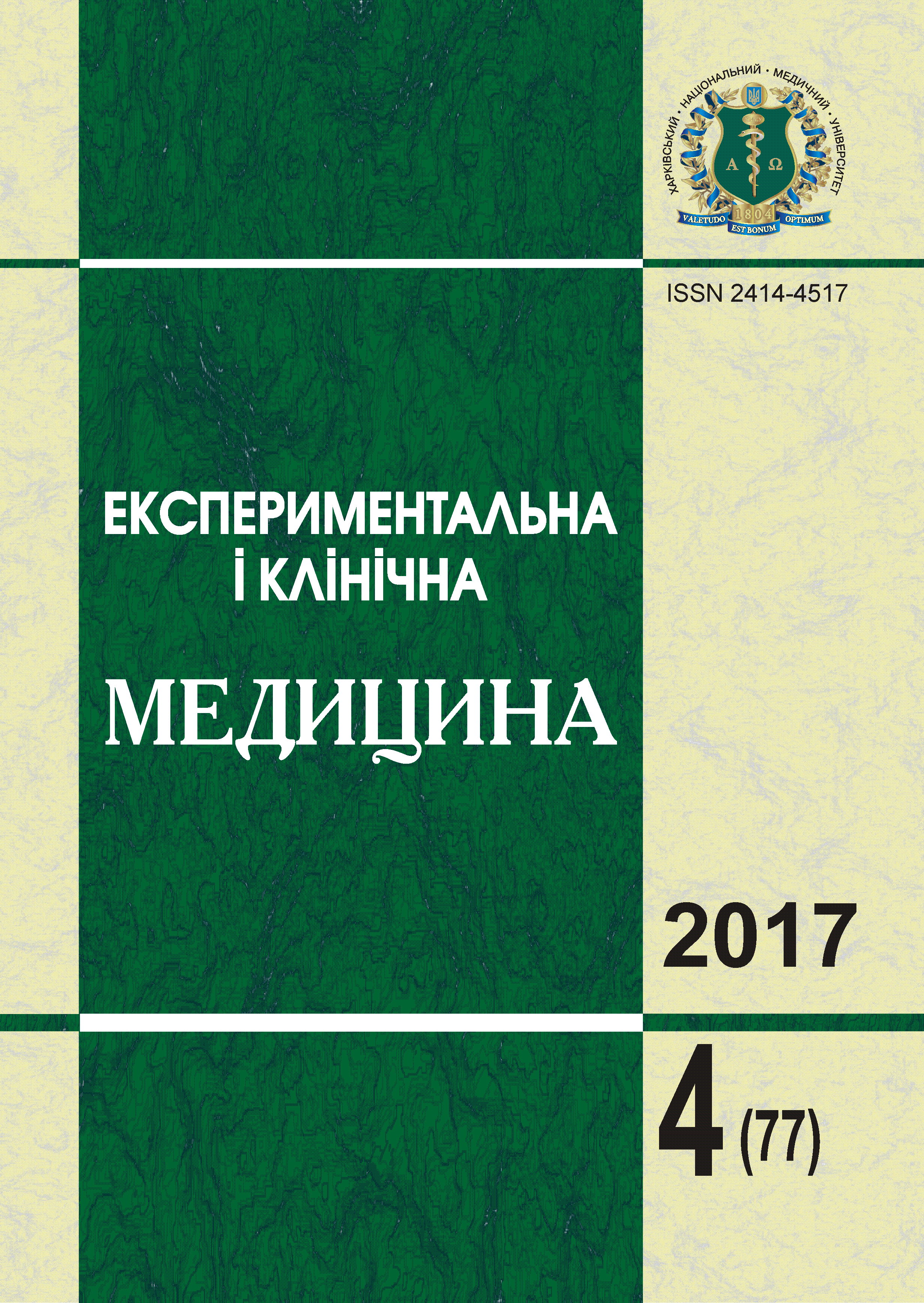Abstract
All patients included in the study were divided into 3 groups: group 1 – 120 patients with stable CHF with PEF, group 2 – 163 patients with CHF and PEF at the intensive care unit (ICU) due to decompensation of heart failure. The group consisted of 79 patients with heart failure with PEF, who died in the ICU due to acute decompensation of heart failure during the period from 2010–2015. In group 1, 6 (5.0%) patients had hyponatremia; in the remaining patients, the content of serum sodium was higher than 135 mmol/l. In the second group, hyponatremia was identified in 42 (25.8%) patients. In the group of decreased patients who made up group 3, 30 (38%) persons had hyponatremia. In all individuals who have the lowest level of serum sodium, the clinical course of the disease was more severe than in those without hyponatremia. Our findings indicate that hyponatremia in patients with CHF and PEF often accompanies decompensation of HF and is a risk factor for intrahospital death.References
McMurray J.V. (2015). Improving outcomes in heart failure: a personal perspective. Eur. HeartJ. 3: 3467–3470.
Filippatos G., Khan S.S., Ambrosy A.P. et al. (2015). International Registry to assess medical Practice with lоngitudinal observation for Treatment of Heart Failure (REPORT-HF): rationale for and design of a global registry. Eur. J. Heart Fail. 17: 27–533.
Schrier R.W. (2006). Body water homeostasis: clinical disorders of urinary dilution and concentration. Jam Soc Nephrol. 17: 1820–1832.
Schrier R.W., Sharma S., Shchekochikhin D. (2013). Hyponatraemia: more than just a marker of diseases everity? Nat Rev Nephrol. 9: 37–50.
Ayus J.C., Achinger S.G., Arieff A. (2008). Brain cell volume regulation in hyponatremia: role of sex, age, vasopressin, and hypoxia. Am. J. Renal. Physiol. 295: F619–F624.
Gankam Kengne F., Andres C., Sattar L. et al. (2008). Mild hyponatremia and risk of fracture in the ambulatory elderly. QJM. 101: 583–588.
Verbalis J.G., Barsony J., Sugimura Y. et al. (2010). Hyponatremia – induced osteoporosis. J. Bone Miner Res. 25: 554–563.
Schekochihin D.Yu., Kopylov F.Yu., Kozlovskaya N.L., Syrkin A.L. (2014). Giponatriemiya pri hronicheskoy serdechnoy nedostatochnosti. Kardiologiya. 6: 63–66.
Gankam Kengne F., Andres C. et al. (2008). Mild hyponatremia and risk of fracture in the ambulatory elderly. QJM. 101: 583–588. (то же, что и 6)
Damman K., Valente M.A., Voors A.A. et al. (2014). Renal impairment, worsen in grenal function, and outcome in patients with heart failure: anupdated meta-analysis. Eur. Heart J. 35: 455–469.
Filippatos G., Farmakis D., Parissis J. (2014). Renal dysfunction and heart failure: things are seldom what they seem. Eur. Heart J. 35: 416–418.
Chawla L.S., Eggers P.W., Star R.A. et al. (2014). Acute kidney injury and chronic kidney diseases inter connected syndromes. NewEngl. J. Med. 371: 58–66.
Damman K., Testani J.M. (2015). The kidney in heart failure: an update. Eur. Heart J. 36: 1437–1444.
Gheorghiade M, Gattis W.A., O’Connor C.M. et al. (2004). Effects of tolvaptan, a vasopressin antagonist, in patients hospitalized with worsening heart failure: a randomized controlled trial. JAMA. 291: 1963–1971.
Klein L., O’ Connor C.M., Leimberger J.D. et al. (2005). Lower serum sodium is associated with increased short-term mortality in hospitalized patients with worsening heart failure: results from the Outcomes of a Prospective Trial of Intravenous Milrinone for Exacerbations of Chronic Heart Failure (OPTIME-CHF) study. Circulation. 111: 2454–2460.
Rusinaru D., Tribouilloy C., Berry C., et al. (2012). Relationship of serum concentration to mortality in wide spectrum of heart failure patients with preserved and with reduced ejection fraction: an individual patient data meta-analysis. Meta analysis global group in chronic heart failure (MAGGIC). Eur. J. Heart Fail. 14: 1139–1146.
Barsony J., Sugimura Y., Verbalis J.G. (2011). Osteoclast response to lower tracellular sodium and the mechanism of hyponatremia-induced bone loss. J. Biol. Chem. 286: 10864–10875.
Park S.J., Shin J.I. (2013). Inflammation and hyponatremia: an under recognized condition? Korean J. Pediatr. 56: 519–522.
Lee D.S., Austin P.C., Rouleau J.L. et al. (2003). Predicting mortality among patients hospitalized for heart failure: derivation and validation of a clinical model. JAMA. 290: 2581–2587.
